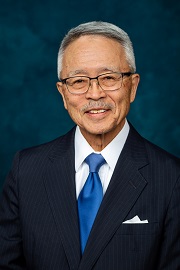
Many people are uncomfortable with conflict and attribute negative emotions to it. Because of this, conflict is something to be avoided or at the least, minimized. When we are self-aware, conflict can be a red flag that saves us from making a mistake or reveals an area of growth. Teams that are enlightened about their own behavior can challenge each other’s thinking without defensiveness or blame. Teams are often liberated with a new sense of freedom when they can be truly authentic with one another and have straightforward, spirited dialog. At R|L we call it “constructive conflict” and view it as a learning opportunity, and ultimately a way to build stronger relationships.
In the vignettes that follow, R|L Coaches weigh in on various practical ways to foster constructive conflict.

Clyde Lowstuter, MCC |
Sources of Conflict
Conflict is triggered by a myriad of embedded emotions, past experiences, and preconceived beliefs. Interestingly, conflict is often less about another person and more about your own intense memory of a negative experience that was inadvertently triggered. It’s not the situation that triggers upset, rather it is the meaning that you attach to it…and the lens through which you view the world. In much the same way that 90% of icebergs are under water, the true sources of conflict are largely hidden from view. What we see are a person’s behaviors and reactions, but the conflict is coming from somewhere else. Before we can truly deal with conflict, we must first discover: Where is the conflict coming from? At times the source of the conflict stems from the natural tensions that occur with various behavioral styles and the lack of appreciation for others’ perspectives. When such behavioral differences are the source of conflict, there is an opportunity to see things from the others’ vantage point and try to understand others intentions in a new way. If behavioral styles are not the issue and conflicts still exist, ask yourself whether you and/or the other person are being authentic. Are there hidden agendas between you that keep you from being open, transparent, and fully expressed with the other? Another deep-seated conflict source is around core values. Your values encompass how you view, judge, communicate, and interact with others. Values influence your work ethic, your personal integrity, and accountability. When values collide, people will rarely change their values, but they can seek instead to find common ground and mutual respect. In the workplace, conflict may also occur from lack of role clarity, reporting relationships, generational differences, leadership climate, and organizational culture. Chances are, when a team stumbles on one of these roadblocks, miscommunication is the culprit. At that point, it is important for the team to pause and clarify expectations, outcomes, and roles. Understanding the source of the conflict lessens its emotional grip and the defensive posture that often ensues. Instead, it allows for constructive conflict, improved self-management, and positive, conscious choices. Take the time today to step back and examine where your most deep-seated conflicts are coming from. Knowing the source of the conflict allows you to address it more directly and effectively. |

Carolyn Lowstuter |
Fostering Constructive Conflict through Other-Focused Listening
Constructive Conflict must begin with making sure that the other person feels completely heard. Other-Focused Listening engages the other person with 100% focus on them at an emotional level. It is like having blinders on, where your peripheral vision is obscured so you can focus solely on the individual in front of you. It is suspending for a moment your own judgments and position. Listening for the meaning and messages between and beneath the words, you will begin to hear their underlying motivators for their perspective. Your goal is to be insatiably curious and to ask questions in a gentle, supportive manner. • Then what? What happened next? (Advancing Questions) Stephen Covey summed it up well when he said, “Most people do not listen with the intent to understand; they listen with the intent to reply.” |

Matthew Gonring |
Finding Common Ground – Appreciating Differences
“We are just too different to make this work” is a theme common with many boss/subordinate relationships. Work-styles and approaches vary by individual, and everybody is entitled to find successes and apply their own methods to leading others and achieving results. We can choose to dwell on and emphasize the differences, or work to find common ground. One of the most common grounds is results. When results are achieved and goals reached, differences can be more easily addressed and mitigated. A global food business U.S. president gained his notoriety by being strong with interpersonal relationships with customers and empathetic to his colleagues needs. In contrast, his global boss was highly detail oriented, and had a background in finance and process improvement. The president was exceeding his revenue goals and felt he didn’t need meddling from someone who wasn’t close to the day-to-day operations and the all-important customer engagements that goes with it. They were notorious for always being at odds. But, by building a representative background model of each, as well as top-lining their strengths and associated challenges, it became obvious they were quite different in many of their approaches to leadership. By getting agreement to share their model with each other, they began to understand and appreciate the basis for their differences, along with grasping their individual formulas for success. Sharing these management differences in an open dialogue further created a better understanding and recognizing one another’s strengths, limitations, and problem-solving criteria. Following the joint review, the two concurred that the organization needed both types to be successful and recognizing their unique approaches went a long way toward being able to communicate openly about their differences. They learned to be adaptive and to complement each other’s capabilities. Even better, they learned to challenge each other in a productive manner, even injecting humor about their different approaches as they sought to problem solve in an effective manner versus a confrontational style that existed prior to the coaching. How will constructive conflict help you in complementing your style to others for the common good? Where might you exercise greater flexibility in your approach? What results might you be able to jointly achieve? |

John Hart |
Collaboration as a Strategy for Conflict Resolution
As leaders we have the opportunity to influence the organizations we serve through our actions. Knowing that conflict is part of every organization, helping others to constructively navigate through conflict by modeling effective behaviors can be highly beneficial. While there are many practical strategies for conflict resolution, collaboration blends assertiveness with cooperativeness in a way that generates engagement that ultimately facilitates buy in. Put simply, collaboration is a great way to bring the perspectives and ideas of many individuals together to create superior outcomes. All too often the beneficial aspects of conflict are not realized due to the assumption that conflict is a win – lose rather than win – win scenario. This begs the question; how do we create an environment that encourages collaboration? By setting the stage for successful collaboration leaders will foster the use of this effective approach. Demonstrating the behaviors below will help to build an engaged and productive approach to collaboration.
The next time you encounter a conflict that is well suited for the use of collaboration, consider the value of providing leadership that will set the stage for successful results. Know that how we operate as leaders will set the tone and culture of our teams. |

Susan Snowden |
Playing All Your Cards to Build Bridges
When I work with clients on conflict, it often strikes me that the 5 TKI conflict modalities – Competing, Collaborating, Compromising, Accommodating, and Avoiding are like 5 playing cards. The game’s result depends on reading the situation and playing the right cards from your hand. Not to get too corny, but as the late Kenny Rogers sang: You’ve got to know when to hold ’em Cause every hand’s a winner That is like conflict, isn’t it? (Sorry, if now the tune is running through your head!) You have choices in conflict, and depending on what you choose, the outcome can be constructive or not. Conflict is an opportunity; you should consider playing with all five cards. Why would it be to your benefit to play just one, say Competing, or two, say Competing and Accommodating, when the situation calls for another modality? As we learn when we take the Thomas Kilmann Conflict Mode Instrument (TKI), we all have conflict leanings or preferences. This week, when you notice you are in conflict mode, try one or two of the other modes and see if you can turn the situation, or “hand,” into one that is a winner and builds bridges for all! |

Pat Mater |
Inspire Employees to Think Differently
I love the description of constructive conflict from Gabriela Molina, “Constructive conflict is encouraged in organizations that want to increase their productivity by inspiring their employees to think differently. It’s not about who is right or who is the winner of the discussion. It’s about understanding each other and building a decision considering what is stated by different team members.” In adopting this view of constructive conflict, you free yourself from per-conceived notions and ruminating thoughts of what others may be thinking. You enable creative and thought-provoking ideas and dialogue among colleagues. Importantly, you share energy, passion, and authenticity in mutually resolving conflict. Prior to freeing yourself, be mindful of your “hot buttons,” those triggers which cause “knee-jerk” reactions that happen before you have given thought to a better response. Triggers tend to be negative and focus on what you feel, for example, excluded, unheard, judged, blamed, disrespected, and frustrated to identify only a few. Prepare in advance to meet your triggers. Use your prior conflict experiences to examine how you feel physically in your body, identify your self-talk, how you feel emotionally, what damage have you caused previously, and what could you have done differently. All of this goes into freeing yourself next time to positively resolve conflict and energize your mind and heart. |

Dave Dallam |
Ambivalence in Decision Making Of the many forms of conflict we each face daily, it is our internal conflicts that are the most common and potentially self-limiting–specifically our ambivalence(s) in decision-making. Ambivalence is defined as our mixed and/or contradictory feeling about an idea or issue. Ambivalence is usually at its greatest when the magnitude of the anticipated outcome is greatest; each side of the balance promises very high return against very high risk. These are usually the hardest decisions to make. Ambivalence is the largest impediment to good decision-making and the source of our subsequent second-guessing of our decisions. The key to resolving ambivalence is in recognition that:
As Winston Churchill remarked, “I never worry about action, only inaction.” Free yourself from ambivalence and internal conflict by choosing to take action. |
|
Ron Hirasawa |
3 Steps for Managing Conflict 1) Stay Centered: Know you are in a conflict and stay centered with the calming breath of life. Managing yourself is the only behavior you can control in a conflict. Taking slower deep breathes through your nose, and slowly exhaling through your mouth damps down adrenaline and cortisol in your body, calming the fight or flight response you are experiencing. Feel your self-awareness inside and outside of yourself. Feel the expression on your face and your body. Strive for a Neutral Accepting Face and Body appearance. Look kindly at others and speak calmly. All these behaviors signal the absence of any threat posture to others. 2) Ponder Others’ Fears and Your Triggers Towards Them: I believe all conflict behavior is driven by fears. What fears are driving the conflict behavior of others? What do you suppose the fears of others are in this moment? Fear of failure? Fear of losing respect and trust? Fear of not knowing? What gets triggered for you by this conflict and why do you become defensive in light of their fears? Rather than becoming reactive and defensive, keep your expressions neutral and accepting. Guard against being cynical and satirical. These mindful exercises help you from being emotionally drawn into the conflict. The beginning of trust may result. 3) Know Conflict Modes: Know Your Conflict Management Mode Choices (Competing, Collaboration, Compromising, Accommodating, and Avoiding (Thomas Kilmann Conflict Mode Instrument (TKI) as well as the BATNA – (Best Alternative to a Negotiated Alternative.) When you know how you react to conflict you can approach each situation mindfully and not re-actively. Knowing where you naturally default in your choices of conflict modes and practicing all 5 modes is the best preparation for satisfactory conflict management outcomes. From the authors of Getting to Yes: Negotiating Without Giving In, Roger Fisher and William Ury describe another conflict management tool, BATNA, as your bottom-line exit point. It is knowing in advance what the most advantageous alternative course of action that could be taken should the negotiations fail or when agreement can’t be reached. Knowing your conflict mode strategies in advance will help you respond with the best constructive choices.
Best wishes as you navigate the turbulent waters of change and conflict this week. Remember that constructive conflict is a learning opportunity. Explore the positive value of conflict with courage, challenge, and open dialogue, yet also with kindness, curiosity, understanding, and respect. Constructive conflict leads with transparency, humility, and authenticity and moves power and egos out of the way. Encourage your colleagues to seek synergy and alignment through spirited and respectful debate. And may you always…“Create Uncommon Results!®” – Clyde Lowstuter, MCC |

